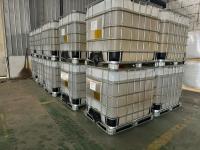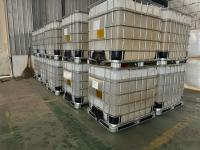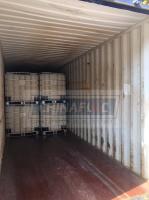Our Products
Product Center / polyamine of FL3240 can be replaced by Chinafloc FL series

polyamine of FL3240 can be replaced by Chinafloc FL series
polyamine of FL324 is kind of model with 40% solid content and 1500-3000 viscosity mainly used for water treatment ,papermaking ,oilfield,agriculture and other areas.Chinafloc FL series can replace of it with better performance.
Polyamines are organic compounds characterized by multiple amine groups. They play a significant role in various industrial and research applications due to their unique chemical properties. Here’s a detailed overview of the main applications of polyamines, particularly focusing on water treatment, papermaking, and oilfields.
1. Water Treatment
Polyamines are widely used in water treatment processes due to their effectiveness as coagulants and flocculants. They are particularly useful in treating drinking water, wastewater, and industrial effluents. Here are some key points regarding their applications in water treatment:
-
Coagulation and Flocculation: Polyamines can neutralize the charges on suspended particles in water, facilitating the aggregation of these particles into larger flocs. This process aids in the removal of turbidity, color, and other contaminants from water.
-
Removal of Microorganisms: Polyamines have been shown to possess antimicrobial properties, making them effective in reducing bacterial counts in treated water. This is particularly important in drinking water purification.
-
Compatibility with Other Chemicals: Polyamines can be used in conjunction with other coagulants such as alum or ferric chloride, enhancing the overall efficiency of the water treatment process.
-
Regulation of pH: The use of polyamines can help maintain optimal pH levels during water treatment, which is critical for maximizing the efficiency of other treatment chemicals.
-
Cost-Effectiveness: Polyamines are often more cost-effective compared to traditional coagulants, providing a more economical solution for water treatment facilities.
2. Papermaking
In the paper industry, polyamines are used primarily as wet-end additives to improve the quality and efficiency of paper production. Their applications include:
-
Retention Aids: Polyamines enhance the retention of fillers and fibers in the paper slurry, reducing the loss of these materials during the papermaking process. This improves the efficiency of the process and the quality of the final product.
-
Strength Agents: Polyamines can increase the tensile strength, tear strength, and burst strength of paper products. This is particularly valuable in the production of high-quality papers that require superior mechanical properties.
-
Deinking Agents: In recycling processes, polyamines help in the deinking of recycled paper by facilitating the removal of ink particles. This leads to cleaner pulp and better-quality recycled paper.
-
Improved Printability: The use of polyamines in papermaking can enhance the printability of paper by improving the surface characteristics, allowing for better ink absorption and sharper print quality.
-
Cost Reduction: By improving the efficiency of the papermaking process and the quality of the final product, polyamines can contribute to overall cost reductions for paper manufacturers.
3. Oilfields
Polyamines are also utilized in the oil and gas industry, particularly in drilling and completion fluids. Their applications in this sector include:
-
Drilling Fluids: Polyamines are incorporated into water-based and oil-based drilling fluids to enhance their performance. They help improve the stability and viscosity of the fluids, which is essential for efficient drilling operations.
-
Fluid Loss Control: In porous formations, polyamines can reduce fluid loss by forming a gel-like barrier, minimizing the invasion of drilling fluids into the formation. This is crucial for maintaining wellbore stability and preventing costly fluid losses.
-
Corrosion Inhibition: Certain polyamines can act as corrosion inhibitors, protecting drilling equipment from corrosive fluids and environments. This extends the lifespan of drilling equipment and reduces maintenance costs.
-
Enhanced EOR (Enhanced Oil Recovery): Polyamines are investigated for their potential in enhanced oil recovery processes. They can improve the mobility of oil in reservoirs and help recover more oil from existing fields.
4. Agriculture
Polyamines are also gaining attention in agriculture for their role as plant growth regulators and stress mitigators. Their applications include:
-
Growth Promotion: Polyamines such as putrescine, spermidine, and spermine have been shown to promote cell division and growth in plants. They play a role in various physiological processes, contributing to overall plant health.
-
Stress Tolerance: Polyamines can enhance the ability of plants to withstand abiotic stresses such as drought, salinity, and extreme temperatures. They help stabilize cellular functions under stressful conditions.
-
Seed Germination: Research indicates that polyamines can improve seed germination rates and seedling vigor, which is vital for successful crop establishment.
5. Biomedical Applications
Polyamines are being explored for various biomedical applications, including:
-
Drug Delivery: Polyamines can be used as carriers for drug delivery systems. Their ability to interact with cellular membranes can facilitate the uptake of therapeutic agents into target cells.
-
Gene Therapy: Polyamines are studied for their potential in gene therapy applications, where they can help deliver nucleic acids into cells, enhancing gene expression and therapeutic outcomes.
-
Anticancer Agents: Some polyamines exhibit anticancer properties and are being investigated for their potential use in cancer treatment. They can influence cell proliferation and apoptosis in cancer cells.
6. Other Applications
Beyond the primary areas mentioned, polyamines have numerous other applications, including:
-
Cosmetics and Personal Care: Polyamines are used in various cosmetic formulations for their moisturizing properties and ability to improve skin texture.
-
Food Industry: Polyamines can be utilized as preservatives or additives in food products, helping to extend shelf life and improve quality.
-
Textiles: In the textile industry, polyamines can be used as finishing agents to enhance fabric properties such as water repellency and stain resistance.





